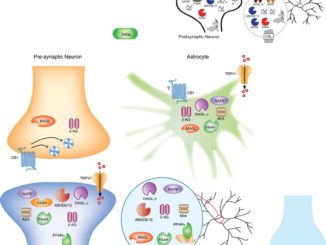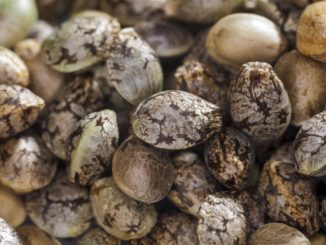
At the microscopic level, our bodies are made up of trillions of cells. Cells are continuously dividing and replicating themselves and as new cells develop, old ones die. Cancer cells, however, are different. They don’t die a natural death, but continue to divide and grow. The challenge to cancer researchers has always been to find a way to selectively kill cancer cells without killing healthy cells. So far, medical science has failed, but nature has provided us with a substance that can accomplish what laboratory scientists cannot. That substance is THC, the active ingredient in cannabis sativa – marijuana.
THC (tetrahydrocannabinol) is the most active of the chemicals known as cannabinoids that are present in all of the plants of the genus cannabis and in greatest abundance in the species cannabis sativa. It is the ingredient that produces the marijuana “high.”
While cannabis has been used throughout the world for thousands of years to treat dozens of illnesses, with the passing of the Marihuana Tax Act in 1937 it abruptly became unavailable to either the general public or the healing professions in the United States. At the same time, medical schools in the U.S. terminated the study of all plant based medicines in favor of the study, promotion and application of synthetic, laboratory produced drugs.
In 1974, the NIH (National Institute of Health) gave a team of researchers at the Medical College of Virginia funding to study THC in order to find evidence that it damaged the immune system. While they failed in their appointed mission, they did discover the startling fact that THC shrank tumors in their laboratory mice. The news briefly surfaced publicly before the FDA abruptly ordered the team to halt their research and confiscated the results of their findings. In 1976, President Nixon signed a law prohibiting research into the therapeutic benefits of all cannabinoids except by pharmaceutical companies. Since that time, the only research done in the United States has been in attempts to produce synthetic THC that has no psychotropic effects.
In 1998, researchers at Complutense University School of Biology in Madrid, Spain undertook studies on mice in order to determine how THC accomplished the task of killing cancer cells without also damaging other cells in the body. They discovered that it does so by two means:
1) It acts to inhibit angiogenesis or the formation of new blood cells in tumors. Solid tumors, such as cancers, require a blood supply in order to grow. When the blood supply is cut off through the anti-angiogenesis effects triggered by THC, the cancer cells die.
2) THC promotes cancer cell death by a process called autophagy. Autophagy literally means “self eat” and that, along with other processes, is essentially what happens. Instead of dividing and replicating, the cancer cells undergo a process of virtual self-digestion and recycling into harmless waste matter.
Because of the ongoing prohibition of cannabis research, very little clinical research has been conducted on human volunteers, but what research has been done has shown promise. The anecdotal evidence, however, is more than just promising. Aside from the well-known palliative effects of marijuana in reducing the side effects of chemotherapy, self-administered THC has been very successful in treating a variety of cancers and other diseases in individuals who have been courageous enough to risk incarceration in order to find a cure for cancer. Visit our site to learn more about this natural cancer treatment.
Proudly WWW.PONIREVO.COM
by Sam Orr



